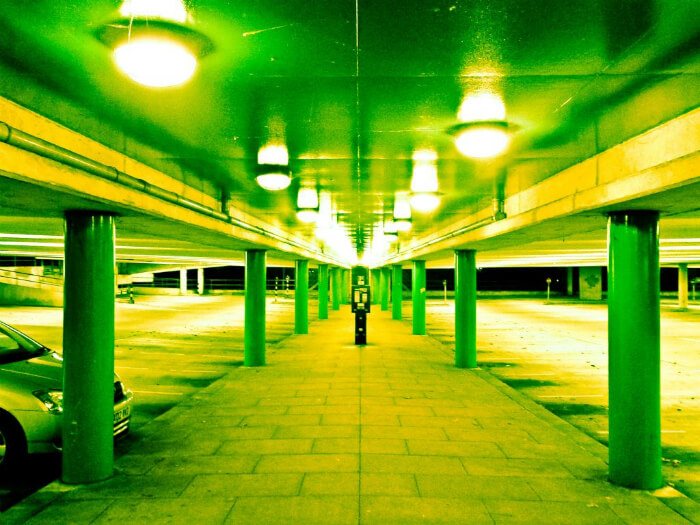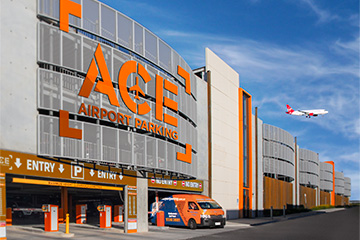Congestion Levy in Melbourne and Sydney
Congestion Levy in Melbourne and Sydney
The State Government imposed congestion levy (also commonly known as a parking tax) has been in place in Melbourne and Sydney for a number of years now.
On 2 October 2017, an article was published in the Herald Sun from the Grattan Institute in relation to road congestion in both Melbourne and Sydney.
The article failed to address the issue of “on-street parking” which is one of the greatest causes of congestion.
Motorists who use parking meters have contributed to the City of Melbourne’s parking revenue record of $49.9 million exceeding the budget forecast by 8.2%.
The Grattan Institute urged the Victorian Government to increase Melbourne’s annual CBD parking space levy from $1,380 to about $2,400 which would then match Sydney.

Congestion Levy – Melbourne and Sydney
Following the Grattan Institute’s call to raise Melbourne CBD’s parking levy, Lorraine Duffy, Chief Executive at Parking Australia believes that:-
“Although congestion needs to be tackled in our metro areas, hiking up the levy will not address the issue. Instead, government and think tanks should be looking at ways modern technologies and better parking management can improve the flow of traffic. After all, parking levies have not proven to be successful in reducing congestion in either Sydney or Melbourne.
Revenue Raising Tactics Won’t Address our City’s Congestion Problems
Calls to increase the parking levy in Melbourne are premature and do not take into account what is actually causing congestion in our cities. There are still many questions around whether parking space levies actually work or achieve the objectives they set out to do.
One of the issues is the Parking Space Levy remains a significant tax generator in both New South Wales and Victoria. While the Government continues to talk about leading the charge in terms of transport and infrastructure, sadly operators and ultimately motorists are the ones paying for it. There is a lack of transparency around parking levies and the question remains, where does the money go?
Since the levy has been introduced, it has increased by 245% and has raised over $623 million in revenue. But, how has this revenue been used to address congestion? There is very little transparency in regards to how this is being spent to improve the lives of Melbourne commuters…
Additionally, before we raise the cost of parking for Melbournians, it would be wise to take a look at the impact the parking space levy has had on Sydney’s congestion. According to research conducted by TomTom, congestion in Sydney has increased by 10% over the last nine years, with the biggest increase, 3%, taking place last year. There is very little evidence the parking space levy has helped address congestion.”
This is a sentiment echoed by James English, Managing Director of Ace Parking, who believes the focus on off-street parking is entirely wrong –
“Off-street parking is essential to get vehicles off the road in our dense urban areas. It frees up the road from parked cars, as well as removing the vehicle from the road network when looking for a parking spot.
On the other hand, on-street parking is one of the major causes of congestion, as commuters circle for cheap spaces not currently included in the levy. The other issue is, some of these spaces are unrestricted, meaning turnover and availability is very low, leading to motorists circling to find a spot. In fact, according to research, looking for a space in urban areas increases congestion by as much as 30%.
The way we manage parking needs to be reconceived. Short of removing all on-street parking, all day parking should be removed from on-street to increase the immediate availability of parking. On-street parking should not offer any parking options, longer than 1-2 hours, if at all.”
To better enhance motorists’ experience in our major cities, Duffy believes technology and preparing for the future transport mix will be vital as our cities continue to grow.
“The world’s most competitive cities are focused on being data-driven, sustainable, responsive and collaborative through the integrated use of technology. Commercial parking facilities are part of the transport solution, not a stand-alone entity,” said Duffy.
“If the objective of the levy is to reduce congestion, then all car users should be the focus of Parking Space Levy. It should not be the burden of parking owners, lessees and managers alone, whilst they invest in the technology and innovations designed to facilitate a better driving and parking experience, as well as prepare for the future of electric and autonomous vehicles.
Instead of taking revenue from the parking industry, which would be spent improving services for motorists, we feel a small proportion (1%) annually of the Parking Space Levy revenue could be allocated to a Future Parking Initiative.
This would be designed to work with relevant stakeholders to guide the development of innovations, such autonomous vehicles, electric vehicles and car sharing schemes, to ensure we have the infrastructure in place to support the transport systems of tomorrow. After all, cars will remain an important part of the transport mix for decades to come, whether or not we are behind the wheel.” concluded Duffy.
The Congestion Levy is aimed to reduce traffic congestion in the Melbourne CBD and surrounding suburbs, reduce pollution and encourage greater use of public transport. Currently, the revenue received by the Congestion Levy is reinvested back into public transport infrastructure. However, there is no link between the revenue and investment in schemes to reduce traffic congestion through investment in walking, cycling and public transport or even sustainable transportation initiatives.
If the State Government is serious about traffic congestion, it should include on-street parking. A single parked car on Punt Road can reduce cars to two lanes of traffic, causing congestion to spill into neighbouring areas. So, if on-street parking can cause such congestion, why shouldn’t these parking spaces not fall under the congestion levy? Relocating on-street parking to off-street areas is another efficient way to relieve traffic congestion.
The State Government’s planning policies aim at curtailing growth in the number of new car parking spaces within the CBD location, with no new multi-storey car parks being developed, demand is exceeding supply. With the growing workforce, increased CBD residents and resurgence in city retailing are all combining to lift demand for car parking. While at the same time supply of new car parks have slowed. Between 2013 and 2015 the total number of CBD car parking space grew by just 2.1%, from 156,791 to 160,086. The largest increases occurred in both Melbourne and Canberra. Over the period 2016-2017 around 1,110 bays are expected to be supplied with a further 3,286 mooted in the medium term. Melbourne has the most car spaces at 41,687 bays.
A better solution:
The congestion levy should now be expanded to include on-street parking. On-street parking is simply too cheap and adds to congestion as drivers look to park.
The way we manage parking needs to be reconceived. Short of removing all on-street parking, “All-day parking” should be removed from on-street parking to increase the immediate availability of parking. On-street parking should not offer any parking options which are longer than 1-2 hours, if at all.
The parking industry is implementing new technology for customers to plan ahead with pre-booking options and space availability apps, removing the vehicle from the road network, creating cleaner and more liveable public spaces.
The existing congestion levy is sufficient and has seen a growing trend from landlords to develop standalone car parks.
In a more radical move, a curfew on truck movements within the congestion levy area between 7am-9am and 4pm-6pm would dramatically increase the road networks capacity, reducing congestion and thus travel times.
The parking industry is calling for transparency on the existing $49.9 million collected from the existing City of Melbourne parking tax to date and how this is currently being spent. Evidently, the tax is being spent on improving the public transport network and not building more car parks at commuter hubs. This simply displaces parking and traffic congestion, instead of tackling the outer transport network required for a growing city.

